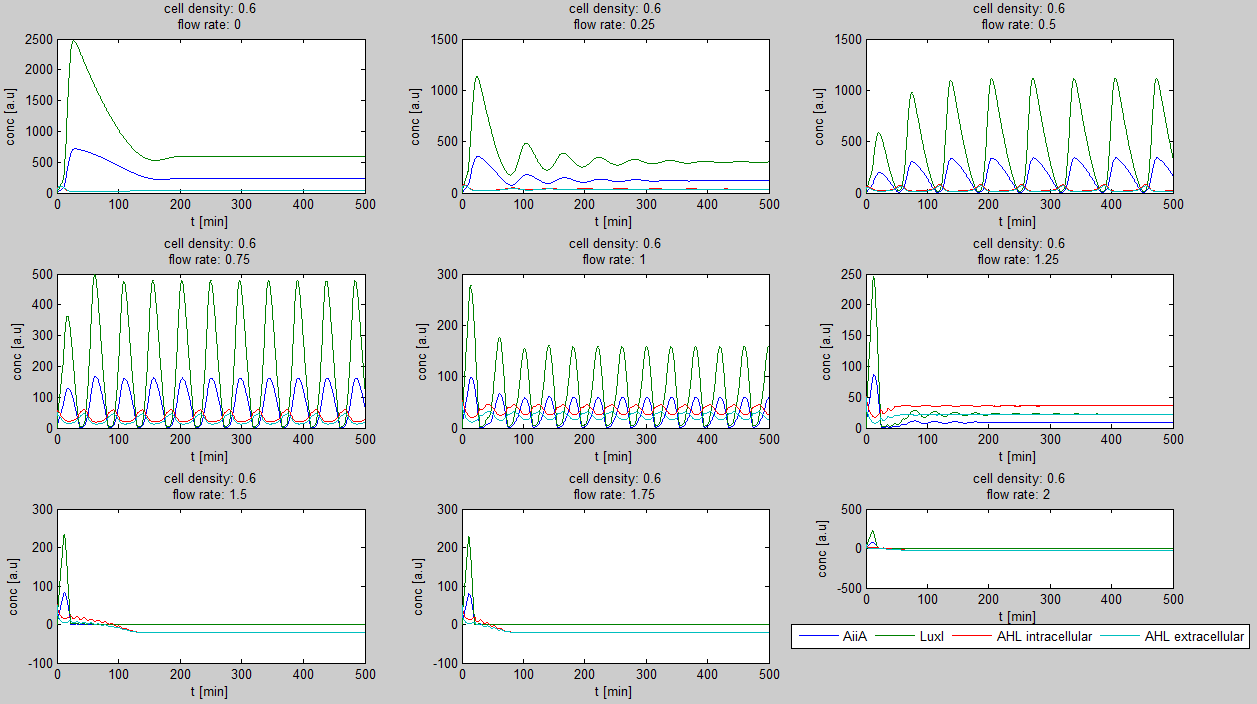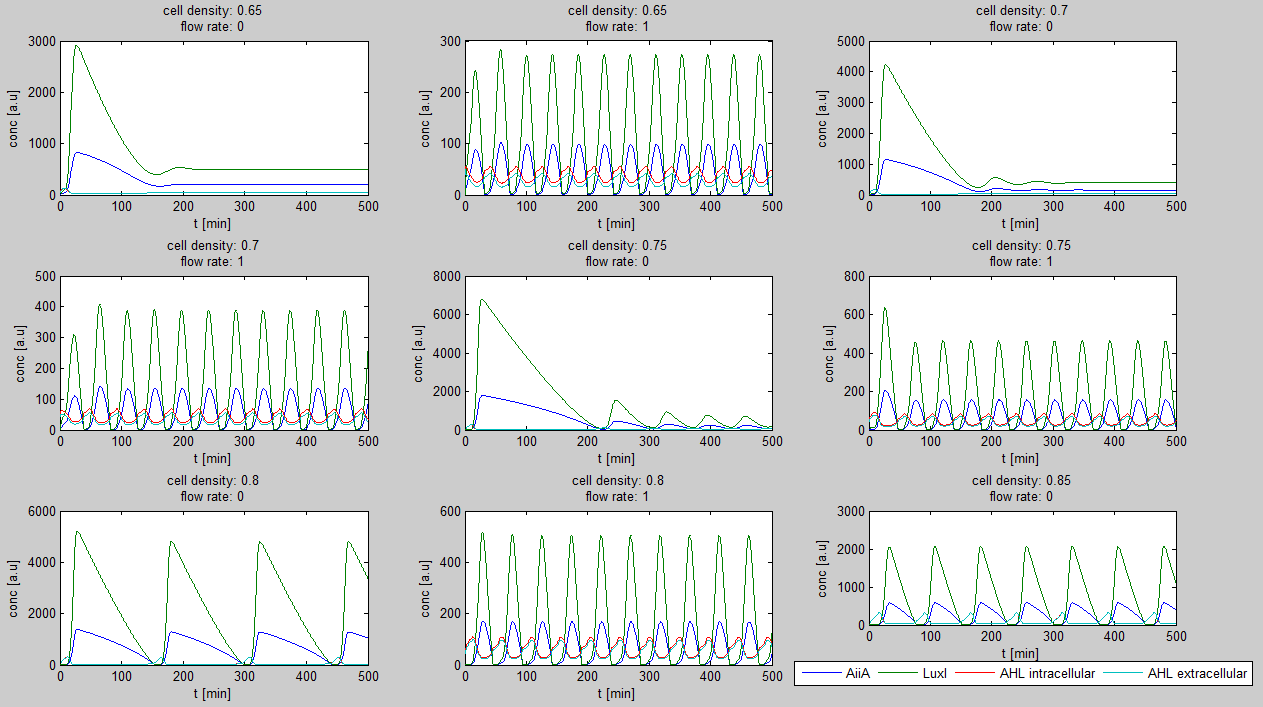Team:Wageningen UR/Project/ModelingProj1
From 2011.igem.org
(→Modeling synchronized oscillations) |
(→Modeling synchronized oscillations) |
||
| Line 48: | Line 48: | ||
=== Mathematical model of the Hasty construct === | === Mathematical model of the Hasty construct === | ||
| - | Since our bio bricked oscillatory system is based on the circuit published by Danino et al. in the paper [http://www.nature.com/nature/journal/v463/n7279/abs/nature08753.html “A synchronized quorum of genetic clocks”], in our team commonly referred to as the "Hasty construct", our first model of the system is a reproduction of the mathematical model in the [http://www.nature.com/nature/journal/v463/n7279/suppinfo/nature08753.html supplementary information] accompanying the publication mentioned. In their simulations, Danino et al. used a set of delay differential equations, which we also used as starting point for our modeling work. | + | Since our bio bricked oscillatory system is based on the circuit published by Danino et al. in the paper [http://www.nature.com/nature/journal/v463/n7279/abs/nature08753.html “A synchronized quorum of genetic clocks”], in our team commonly referred to as the "Hasty construct", our first model of the system is a reproduction of the mathematical model in the [http://www.nature.com/nature/journal/v463/n7279/suppinfo/nature08753.html supplementary information] accompanying the publication mentioned. In their simulations, Danino et al. used a set of four delay differential equations, which we also used as starting point for our modeling work. |
<!-- | <!-- | ||
[[File:Equations_hasty_WUR.png|350px|left]] | [[File:Equations_hasty_WUR.png|350px|left]] | ||
| Line 83: | Line 83: | ||
=== Writing a modeling tool in matlab === | === Writing a modeling tool in matlab === | ||
| - | + | ||
[[File:Oscillation_GUI_WUR.png|center]] | [[File:Oscillation_GUI_WUR.png|center]] | ||
| - | '''Fig. | + | '''Fig.1:''' ''GUI of the matlab modeling tool created by team Wageningen UR'' |
| - | For the first simulations, the same | + | For the first simulations, the same parameters were used as in the cited paper, the only variables being the cell density and flow rate. To get an idea about the different conditions in which oscillations could occur, our team created a script for a matlab modeling tool which uses nested for-loops to vary the flow rate and cell density over a range of values. The resulting tool allows the user to enter the range in which the variables should be varied. The tool then iterates over the values and plots graphs of all combinations possible for that range of values. Figure 2 shows an example output of the tool. |
[[File:Example_output_graphs_WUR.png|770px|center]] | [[File:Example_output_graphs_WUR.png|770px|center]] | ||
| - | '''Fig.2:''' ''Variation of output graphs depending on the different starting conditions'' | + | '''Fig.2:''' ''Variation of output graphs depending on the different starting conditions'' |
| Line 102: | Line 102: | ||
=== Conclusions for our system === | === Conclusions for our system === | ||
| - | The first observation from the model was that, for oscillations to occur, the flow rates may not be too fast, especially at lower cell densities. Since the device used for our system has larger dimensions than the microfluidic device used by Danino et al. the flow rates in the velocities required could not be achieved by varying height differences alone. Further information can be found in the information about the [[Team:Wageningen_UR/Project/Devices#Setup| platform used to measure oscillations.]] | + | The first observation from the model was that, for oscillations to occur, the flow rates may not be too fast, especially at lower cell densities. Since the device used for our system has larger dimensions than the microfluidic device used by Danino et al. the flow rates in the velocities required could not be achieved by varying height differences alone. <!-- Further information can be found in the information about the [[Team:Wageningen_UR/Project/Devices#Setup| platform used to measure oscillations.]] --> |
Furthermore, an interesting observation was that applying a flow rate over the cells was not essential to obtain ocillations. Figure 3 shows how, according to the model, oscillations can potentially occur at 0 flow rate. Interesting is that this happens only at high cell densities. | Furthermore, an interesting observation was that applying a flow rate over the cells was not essential to obtain ocillations. Figure 3 shows how, according to the model, oscillations can potentially occur at 0 flow rate. Interesting is that this happens only at high cell densities. | ||
Revision as of 19:27, 19 September 2011
 "
"





